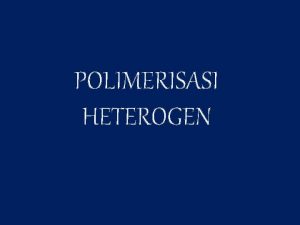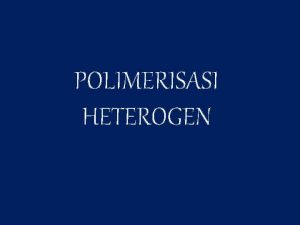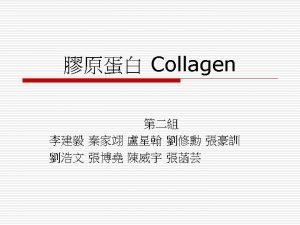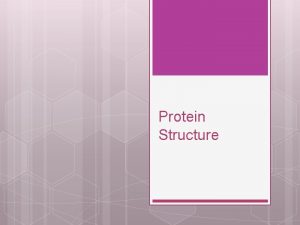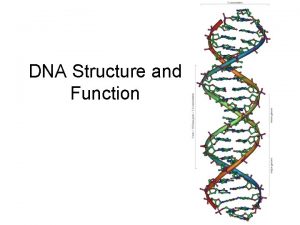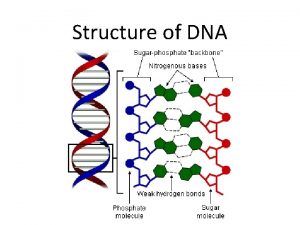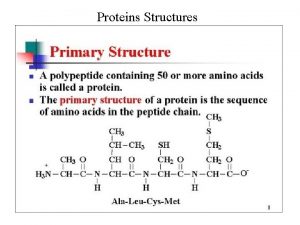structure n n n Monomer The primary structure













- Slides: 13


structure n n n Monomer The primary structure of lysozyme is a single polypeptide containing 129 amino acids. Lysozyme has five helical regions and a three -stranded antiparallel β sheet and a large amount of random coil and β turns. The structure revealed 4 stabilizing disulfide bonds. In physiological conditions, lysozyme is folded into a compact, globular structure with a long cleft in the protein surface.

*四個雙硫鍵 *129個amino acids

Polysaccharide Lysozyme-polysaccharide Intermediate

substrate n chitin, which is a polymer of NAG linked by ß(1 -4) glycosidic bonds. Chitin is found in crustacean(甲殼綱) shell tissue n the polysaccharide component of the cell walls of certain bacteria; the principal function of lysozyme is as an antibacterial agent. This polysaccharide is composed of alternating residues of NAG and NAM. Only the glycosidic bonds between C-1 of NAM and C-4 of NAG are hydrolyzed.

function Abundant in a number of secretions, such as tears, saliva, and mucus. It also can be found in egg whites. n 藉由與細菌的細胞壁結合,減少其上的負電荷, 而促進白血球的吞噬作用(類似無專一性的調理 素)。 n 切割peptidoglycan glycosidase or glycohydrolase(catalyze the transfer of a glycosyl group to water: C-O bond broken) n

function catalyzing hydrolysis of 1, 4 -beta-linkages between N-acetylmuramic acid (NAM)and Nacetyl-D-glucosamine (NAG)residues in a peptidoglycan. n Cleave the cell wall of gram positive bacteria. **(Peptidoglycan forms around 90% of the dry weight of Gram-positive bacteria but only 10% of Gram-negative strains. ) gram-positive bacteria have one lipid layer just inside their cell wall while gram-negative bacteria have two lipid layers, sandwiching their cell wall n

Mechanism n SN 1 and SN 2 arguments n active site作用的位置 為Glu 35 and Asp 52 n Cleave the glycosidic C-O bond between NAM and NAG in site D and E 將Glu 35置換為Gln 35, 藉此觀察二 mechanism之 intermediates n 將F原子取代C- 1 and C-2 上的H, 改變SN 1之reaction pathway n n SN 2 major


Interaction between lysozyme and substrate Lysozyme's active site is a long, deep cleft in the protein surface. The polysaccharid substrate(e. g. NAM-NAG-NAM-NAG) is properly positioned by hydrogen bonding and hydrophobic interactions. **the hydrolysis of the polysaccharid only happen on the C-O bond between 4 th and 5 th sugar units

Q&A n 為什麼lysozyme只作用在第四和第五個 units上? 1. Site D of Peptidoglycan 結構上的改變 促進接上lysozyme(distortion) 2. Lysozyme對trimer, tetramer, pentamer 的match 3. NAM-NAG可切, NAG-NAM不可以切

disease n hereditary amyloidosis n the cause is a mutation in the lysozyme gene, which leads to accumulations of lysozyme in several tissues

Compare with penicillin Lysozyme 切斷處 Penicillin 切斷處
 Chemsheets addition polymers 1 answers
Chemsheets addition polymers 1 answers Hình ảnh bộ gõ cơ thể búng tay
Hình ảnh bộ gõ cơ thể búng tay Bổ thể
Bổ thể Tỉ lệ cơ thể trẻ em
Tỉ lệ cơ thể trẻ em Gấu đi như thế nào
Gấu đi như thế nào Tư thế worm breton
Tư thế worm breton Hát lên người ơi alleluia
Hát lên người ơi alleluia Các môn thể thao bắt đầu bằng từ đua
Các môn thể thao bắt đầu bằng từ đua Thế nào là hệ số cao nhất
Thế nào là hệ số cao nhất Các châu lục và đại dương trên thế giới
Các châu lục và đại dương trên thế giới Công thức tiính động năng
Công thức tiính động năng Trời xanh đây là của chúng ta thể thơ
Trời xanh đây là của chúng ta thể thơ Mật thư anh em như thể tay chân
Mật thư anh em như thể tay chân













